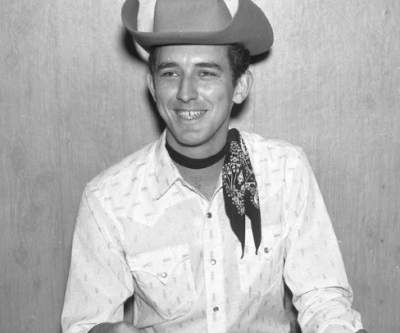December 20, 2018
Tuesday
8:00 p.m.
Minneapolis, MN
Test schedule
A live performance with Robin and Linda Williams at the Cedar Cultural Center
May 20, 2018
Sunday
3:00 p.m.
Lexington, MA
Lexington, MA
A live performance at the Saenger Theatre
April 10, 2018
Tuesday
8:00 p.m.
Tulsa, OK
Tulsa, OK
A live performance at the Brady Theater
March 17, 2018
Saturday
8:00 p.m.
Long Beach, CA
Long Beach, CA
A live performance at the Carpenter Performing Arts Center
March 15, 2018
Thursday
7:00 p.m.
Mobile, AL
Mobile, AL
A live performance at the Saenger Theatre
“Out of the rolling ocean the crowd” by Walt Whitman. Public domain. (buy now)
Out of the rolling ocean the crowd came a drop gently
to me,
Whispering, I love you, before long I die,
I have travell’d a long way merely to look on you to
touch you,
For I could not die till I once look’d on you,
For I fear’d I might afterward lose you.
Now we have met, we have look’d, we are safe,
Return in peace to the ocean my love,
I too am part of that ocean, my love, we are not so
much separated,
Behold the great rondure, the cohesion of all, how
perfect!
But as for me, for you, the irresistible sea is to separate
us,
As for an hour carrying us diverse, yet cannot carry us
diverse forever;
Be not impatient — a little space — know you I salute
the air, the ocean and the land,
Every day at sundown for your dear sake, my love.
It’s the birthday of novelist Jean Stafford, (books by this author) born in Covina, California (1915). When she was six years old, her father lost most of the family’s money on the stock market. They moved to Boulder, Colorado, where they lived in poverty. They survived by taking in sorority girls as boarders.
After college, Stafford began dating a young poet named Robert Lowell. He asked her to marry him, even though his aristocratic family disapproved of her.
Stafford was still trying to make up her mind when she and Lowell got into a serious car accident. He had been driving drunk and was unhurt, but she was disfigured in the accident and had to have reconstructive facial surgery. She sued him for damages, but also accepted his proposal. They got married in 1940.
In 1944, she published her first novel, Boston Adventure, about a poor girl who escapes her working-class town to work for a wealthy lady from Boston. It was a best-seller, but soon after its publication, her marriage with Lowell fell apart. She wrote several more novels, but they didn’t make her any money. She struggled with alcoholism and supported herself by selling short stories to The New Yorker magazine.
When she published Collected Stories of Jean Stafford in 1969, it won the Pulitzer Prize. Stafford died 10 years later, and she left her entire estate to her cleaning woman.
The United States Postal service introduced ZIP codes on this day in 1963. “ZIP” stands for “Zone Improvement Plan,” and they’re designed to make sorting and delivering mail more efficient. The first three digits represent the part of the country the mail is going to, and the last two identify the post office within that region.
In 1983, the U.S. Postal Service rolled out “ZIP + 4,” which added a hyphen and four additional digits to the end of the current ZIP code to speed things up even more. The first two digits of the addendum stand for a specific group of streets or cluster of large buildings, and the last two narrow it down further, specifying one side of the block or even one floor in a large building.
ZIP codes start with zero in the Northeast and get bigger as one moves south and west. There are more than 42,000 ZIP codes in the United States.
On this day in 1979, Sony introduced the Walkman portable cassette player. Sony’s co-founder, Masaru Ibuka, liked to listen to music when he traveled, but he was tired of lugging a full-size cassette player with him, so he commissioned designers to come up with something more portable. Cassette player technology had been around since 1963, but Sony miniaturized it and made it portable as well as private, with no external speaker. They took the idea of the Pressman — a portable tape recorder that was popular with journalists — and removed the recording mechanism and added stereo sound. Skeptics doubted that it would sell, since it lacked recording capability, but Ibuka replied, “Don’t you think a stereo cassette player that you can listen to while walking around is a good idea?”
The first Walkman model was the TPS-L2; it weighed 14 ounces, had a blue and silver chassis, chunky buttons, and two headphone jacks so you could listen with a friend. The Walkman was first available in Japan for a cost of 30,000 Yen, about $150 U.S., and Sony sold 50,000 of the players during the first two months, two and a half times more than they had projected.
Four years later, cassette tapes were outselling vinyl records for the first time, and in 1986, the word “Walkman” made it into the Oxford English Dictionary. Eventually, Sony came out with all kinds of new features — automatic reverse, AM-FM receivers, “bass boost,” and weatherproofing — but the writing was on the wall for cassette tapes once compact discs were introduced in 1982.
It’s the birthday of the man who told writers to “Omit needless words!”: William Strunk Jr. (books by this author), born in Cincinnati, Ohio (1869). He was an English professor at Cornell, where he published his grammar book The Elements of Style (1918). He intended it as a reference for his students, and one of those students was named Elwyn Brooks White. E.B. White went on to become a famous writer, and in 1957, White was commissioned to revise and expand the original grammar book. The new version of The Elements of Style, also referred to simply as “Strunk & White,” has sold more than 10 million copies.
It’s the birthday of French novelist George Sand (books by this author), born Lucile Aurore Dupin in Paris (1804). She was raised by her grandmother at the family’s estate in rural Berry in central France, and was sent to an English convent in Paris to be educated. Although she started out as a troublemaker, Aurore underwent a spiritual conversion and decided to become a nun. She was an enthusiastic convert, and the other girls called her “Saint Aurore.” When her grandmother discovered her granddaughter’s intentions, she promptly removed her from the convent and brought her home.
Back in Berry, she abandoned her dreams of the convent and did whatever she pleased. She loved to ride horseback, and her tutor at the time encouraged her to wear men’s clothing since it was more comfortable, so she rode all over the countryside in pants and a loose shirt. She smoked tobacco, learned to shoot, and flirted outrageously with all the local men. When her grandmother died, she inherited her money and estate.
She briefly went to Paris to live with her mother, then got married and had two children. But her marriage soon deteriorated — her husband drank too much and was unfaithful. She fell in love with other men, including the novelist Jules Sandeau. Her relationship with Sandeau was short-lived, but while they were together, they co-wrote a novel, Rose et Blanche (1831). It was published under Sandeau’s pseudonym, J. Sand. When the publisher asked for another book, she had one written entirely by her, but Sandeau did not want it under his pen name. As a compromise, she published her new novel, Indiana (1832), under the name George Sand. It was a big success.
She was a prolific writer; she wrote more than 90 novels, 35 plays, and a multivolume autobiography.
Sand was one of the most famous women of her time, not just for her writing but for her scandalous behavior — everything from her men’s clothing and cigars to her sexual exploits were in the public eye. She had a long string of lovers, including Frédéric Chopin, and her many friends included Honoré de Balzac, Émile Zola, Eugène Delacroix, Ivan Turgenev, and Gustave Flaubert. Sand and Flaubert were especially close, although the two novelists disagreed on just about everything from politics to the role of women to the purpose of art. They spent long hours together, smoking and discussing literature and humanity; they exchanged frequent letters, and read each other’s unpublished work. Sand was 17 years older than Flaubert; he addressed his letters to her “dear master,” while she addressed hers “friend of my heart.”
She said: “The world will know and understand me someday. But if that day does not arrive, it does not greatly matter. I shall have opened the way for other women.”






